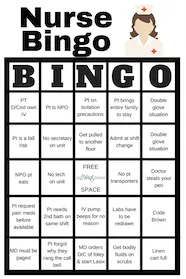Proper body mechanics in nursing are a must. Back pain is a significant contemporary nursing issue, and leveraging good technique, possibly wearing a back support, and mindfulness is vital to prevent nurse back injuries.
The nursing profession requires a ton of heavy lifting – figuratively and literally. Unfortunately, this means those who practice it tend to be prone to musculoskeletal disorders (MSDs), such as back injuries. The U.S. Bureau of Labor Statistics (BLS) estimates that, as of December 2014, nursing assistants have some of the highest incidence rates of MSDs< , totaling about 393 across private, state, and local government sectors.
As a professional responsible for the lives of others, you must avoid becoming part of those grim statistics. To minimize the chances of back injury during your work, here are the steps you can take.
Tips for Avoiding Back Injury as a Nurse
Assess the Situation
Before you do anything, think carefully about what it will take to get a patient from point A to point B. Is the patient tiny and light, or large and heavy? Does the patient want to use the bedpan, or is there a need to transfer to another room? Is the patient cooperative and docile, or angry and hostile? Are there any obstructions on the floor that must be removed to avoid accidents? By answering these questions, you can determine the most efficient way to transport the patient without causing harm to either of you.
Strengthen Your Back with Exercise
You’re less likely to suffer from injury when you’re in good shape. Try these basic exercises from the Mayo Clinic to strengthen your back and its supporting muscles. Be sure to consult your doctor before performing these exercises, however, since they might aggravate your existing health conditions.
Use Good Lifting Techniques
You might have heard about “proper body mechanics” in school, which apply to carrying and turning patients every to avoid pressure sores. The strain on your back can be much more pressure than the patient’s weight! The proper steps bear repeating if you’re reasonably sure you can lift a patient on your own:
- Warm up your muscles before you lift.
- If the patient is far away from you, bring them closer. Your load must be near your center of gravity (i.e. your abdomen).
- Widen your stance for balance.
- Grip the patient tightly, while keeping your arms straight.
- Tuck your chin in.
- Use your legs to lift, instead of your back.
- Avoid jerking while you lift.
- Keep your back straight. Avoid bending forward or sideways.
In most cases, however, it’s best to employ one of the next two steps, for safety’s sake.
Get Help from Co-Workers
You don’t have to do all the lifting on your own. Reach out to co-workers on standby and ask them to help you. Estimate the weight that each of you can carry and distribute accordingly. As with lifting a patient alone, the basic rules of body mechanics still apply.
Make Use of Lifting Equipment As Much As Possible
Even with “proper body mechanics”, there’s still a good chance of getting injured – especially when you regularly lift 200 to 300-pound patients. If your hospital offers any equipment specially designed for lifting, use it whenever possible. Fortunately, thanks to greater awareness surrounding injuries in nursing, patient lifts are becoming increasingly common in hospitals. You can also invest in quality back support to help stabilize your back.
Take Frequent Breaks
If you’ve been moving and lifting patients nonstop all day, it will take a toll on your body. Take a break between lifts, and give yourself time to recover your strength. Doing this and pacing yourself ensures that your energy levels last throughout the day.
Consider Shifting to Less-Stressful Specialties
If, despite all of the above, you’re struggling with your work, maybe it’s time for a career change. Consider shifting to a nursing specialty that doesn’t require heavy lifting, such as quality assurance, private duty, or even a college professor to train tomorrow’s nurses. In these roles, you can use your training well, earn a good income, and avoid injury simultaneously.
Back injuries, and injuries in general, don’t have to be par for the course for nurses. Take stock of all your options. See which one is the best long-term solution for you and be decisive about it. In the end, you’ll be thankful for making the best choice. And if you do get hurt, make sure you have Disability Insurance for Nurses.
What tips do you have to avoid back injury?
Download Nurse Bingo Today!

Liven up any shift with a fun game of bingo. See who can fill a row first!
Fill a whole card and lose grip with reality.
Your privacy is protected. We will never spam you.




Great article. But can you make a more detailed post about the exercises?